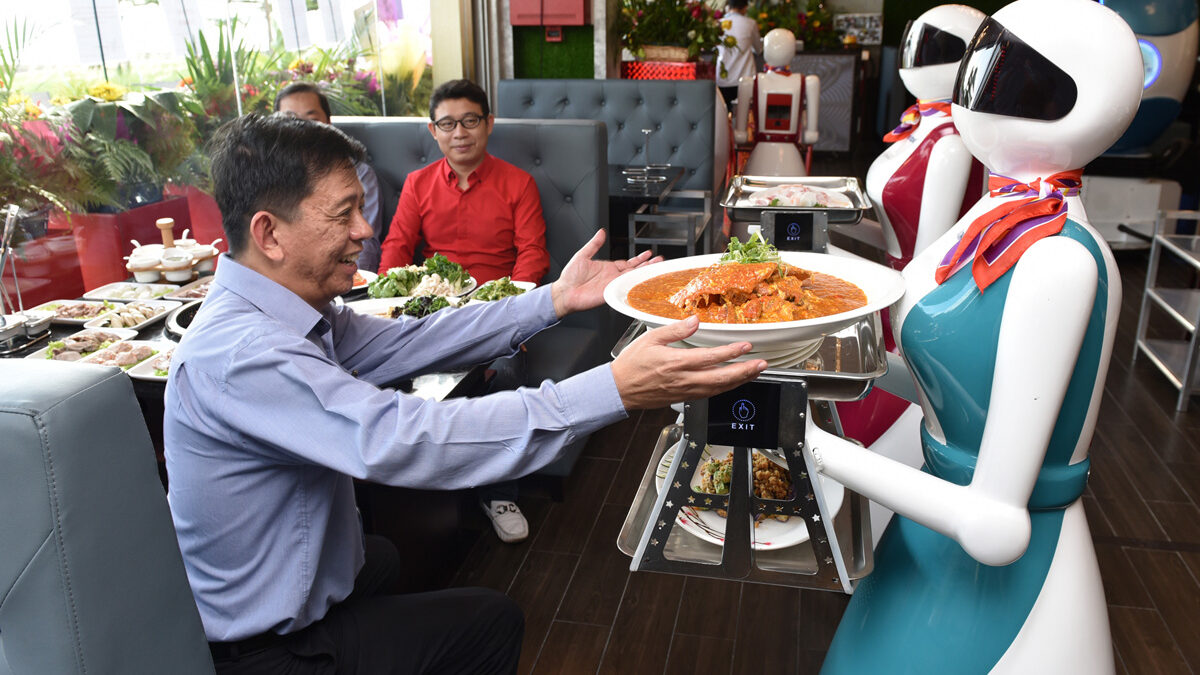Although the restaurant industry has recovered slightly since the pandemic’s peak, many restaurants are still facing overwhelming challenges that keep them from running their operations smoothly.
Even as restrictions are slowly being lifted, restaurants can’t operate at 100 percent due to increasing operational costs and an unprecedented labor shortage. Restaurant owners must develop new ways to work more efficiently and attract more customers. Robot assistance is one solution to both these problems and could be the next big shift that will change the entire restaurant industry.
Technology in the Restaurant Industry
The food and beverage industry is no stranger to new technologies, especially in the past couple of years with the boom of online ordering apps and QR code technology. Many of these digital solutions were necessary for restaurants adapting to the COVID-era. For example, the rise of ordering and delivery apps was due to consumers staying indoors to abide by social distancing rules. Furthermore, restaurants began implementing QR codes for contactless self-serve ordering. Scanning these barcodes lets customers view menus, order and pay on their mobile devices—this reduces physical interactions to keep diners and employees safe. With more technologies like self-order kiosks and voice assistance, the restaurant industry could look very different in a post-covid world.
Staff Shortages Due to the Pandemic
The increasing labor shortage continues to put restaurant owners in challenging situations. As they struggle to find new hires, they’ve been forced to cut hours of operations, remove menu items, and even pay “$50K per annum to wash dishes.” Owners have to balance between staying open and not overworking the employees they have left. However, a few restaurants have turned to robot assistance for help and have been experiencing great results ever since.
Food Delivery and Service Robots
The next generation of restaurant hospitality could very well be in the form of intelligent robots capable of serving and interacting with guests. These robots have been seen taking over the restaurant industry in China, and they’re starting to gain traction here.
Features
For less than $1000/month, restaurants can have their own robot server that greets guests and delivers dishes to their tables. The additional help eases the workload for staff, so they have more time to interact with guests and provide better service. The robots can navigate throughout the restaurant with the help of lasers and sensors to safely and efficiently serve food to diners. Not only do they improve restaurant operations, but their cute and innovative designs also make them a great attraction to draw customers. They can talk and even sing songs for guests – creating a fun and novel dining experience.
Benefits
Restaurants that have adopted these robots have reported increased work efficiency and more customer traffic despite dining restrictions still being in place. One restaurant in the UK turned to robot servers after struggling to find staff, and the benefits exceeded their expectations. The owner went on to say that “customers love it,” and the robots “attract people to come to the restaurant to see the robot serving.” While they’re not a complete replacement for human staff, the robots can perform tedious and more time-consuming tasks so that the servers have more time to communicate with guests. Traditionally, waiters/waitresses spend more than 50 percent of their time traveling between the kitchen and customers’ tables, which could be significantly reduced with the help of robot assistance.
Furthermore, digital ordering can reduce the time it takes to process orders. One sushi restaurant in Canada implemented self-serve ordering for dine-in and saved on average three hours per day on order processing alone. Previously, their staff spent three-to-five minutes per table taking orders and inputting them into their POS system. However, with digital ordering, customers can order for themselves and their orders are automatically printed without manually inputting them again.
On top of that, the increased customer traffic brings more sales and social media exposure for restaurants. Children love the robots, and diners are constantly sharing them on their social media as well. People see these robots and want to experience the service for themselves, making them excellent marketing tools.
Automated Dining
Enhance the dining experience even more by incorporating digital ordering to automate the entire process. Restaurants can implement QR codes that allow customers to self-order on their mobile devices and have robots deliver the food. Goopter, a Canadian-based tech company, offers these robots and a digital ordering solution that works seamlessly together.
While robot assistance is still in its early stages, it will definitely continue to grow and become more sophisticated. It is only a matter of time before we see fully automated restaurants. We’ll likely start to see other industries like casinos and hotels incorporating them as well. For now, the robots are a creative solution to combat the staffing problem that restaurants are facing.



